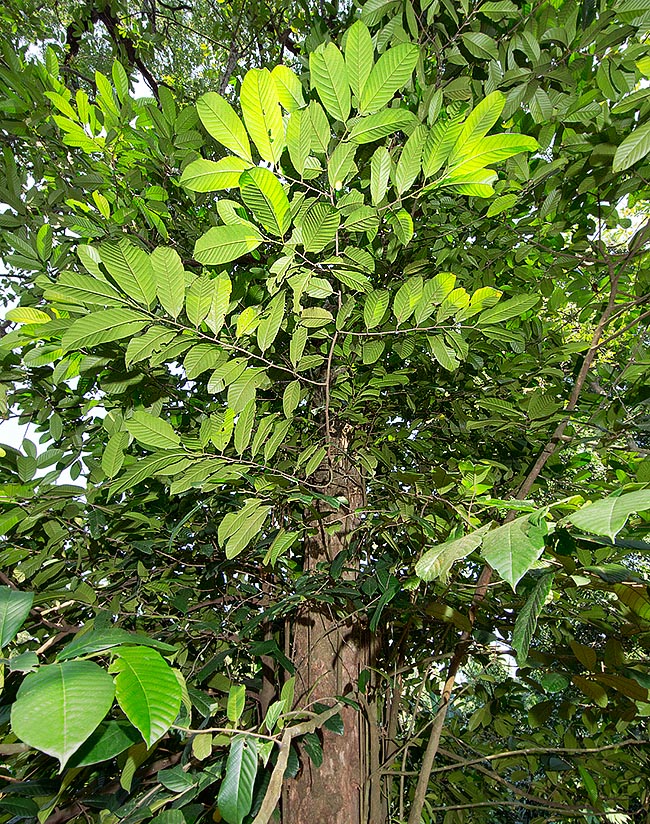Family : Cornaceae

Text © Pietro Puccio

English translation by Mario Beltramini

The Alangium ridleyi is a even 35 m tall tree native to south-eastern Asian swampy forests. It has small edible fruits but does seem uncultivated and almost unknown out from its origin zones © Giuseppe Mazza
The species is native to Cambodia, Laos, Peninsular Malaysia, Singapore, Sumatra, Thailand and Vietnam where it grows in the swampy forests, often as dominant species, from the sea level up to about 400 m of altitude.
The derivation of the generic term is not clear, some think it is the variation of the name of the genus Angolam Adans. (1763), others that it comes from a local name, “alangi”, used in the Indian region of Malabar; the species is honoured to the English botanist and geologist Henry Nicholas Ridley (1855-1956), first director of the Singapore Botanic Gardens where it was identified as a new species.
Common names: lajik kuning, medong (Bornean); boiko (Indonesian); babi kurus, mentulang daun lebat (Singaporean); cây quăng, nang (Vietnamese).
The Alangium ridleyi King (1902) is an up to 35 m tall evergreen tree and dark grey bark of the trunk that may reach the 50 cm of diameter.
The leaves, on a 2-4 cm long petiole, are spirally arranged, simple, elliptic with pointed apex and entire margin, glabrous, 10-40 cm long and 5-15 cm broad, of intense green colour.
Inflorescences in axillar sessile cymes carrying 3-10 flowers, 1,5-2,5 cm long and of about 2,5 cm of diameter, white, with campanulate calyx and corolla with 6 fleshy petals oblong-lanceolate, retroflexed, pubescent inside.
The fruits are ovoid drupes with 10-14 longitudinal reliefs, 3-3,7 cm long and of about 2 cm of diametre, of purple red colour, containing one seed provided of edible aril.
Almost unknown species out from its origin zones and that does not appear to be object of cultivation, but that presents such characteristics to render it suitable as ornamenal tree for the tropical climates, to utilize in full sun on soils maintained almost constantly humid, rich of organic subastance, acidic to neutral.
Also the white wood, is rarely utilized by the local populations in spite of its good characteristics of hardness and resistance.
Synonyms: Marlea costata Valeton (1906).
→ To appreciate the biodiversity within CORNACEAE family please click here.
